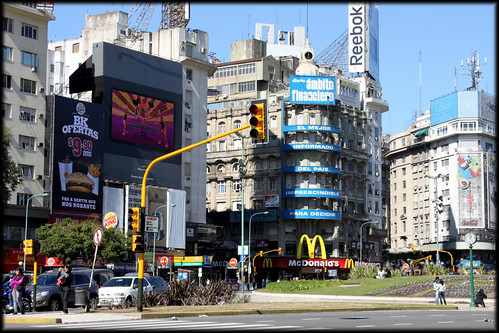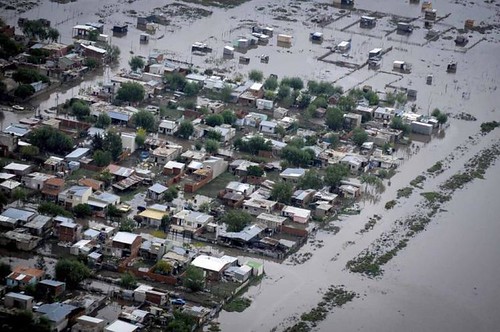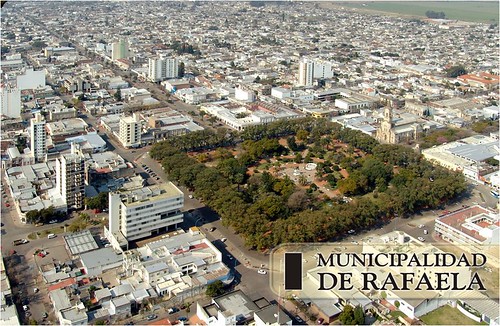The need for planning in the 'Southern Cone': a second look at Argentina (by Lee Epstein)

Posted December 20, 2013 at 1:30PM
Today's article is guest-authored by my friend and frequent collaborator, Lee Epstein. Lee is an attorney and land use planner working for sustainability in the mid-Atlantic region.
Almost a year ago, I explored in this space some of the positive attributes of urban development and a vibrant urban culture in Buenos Aires (“BA”), Argentina. I proffered my personal observations as a visitor, as well as some information I had gained through research -- on both the positive and not-so-positive aspects of that great city’s design and its ongoing struggles to manage its substantial density and external development, historical socio-economic problems, and challenges of “becoming” in the 21st century. I concluded that we North Americans could surely learn something from this vital, lively place, and that Porteños (what citizens of BA call themselves) could learn something from us about urban planning (well, at least in theory).
While it is socially and technologically advanced in so many ways, Argentina is a country still somewhat straightjacketed by today’s economic policy and yesterday’s political history -- in part because of its currently uninspired, somewhat cynical, and imperial, queen-like leadership. From an environmental and sustainability perspective, newer urban development forms and processes, and the techniques used to shape or manage them, have emerged only in fits and starts across the country. That they have emerged at all seems to be so almost in spite of neglect by national leaders, and the fractured or highly fragmented political structure that exists among federal, provincial and municipal levels of government. At the same time, the world’s changing natural environment is pressing its demands upon a populace that is, in some places, economically challenged, especially vulnerable, and mostly unprepared.
Climate and flooding
Climate change is a harsh reality, not a theory, in many places around the world. According to Argentina’s National Meteorological Service, over the last fifty years Argentina’s average annual precipitation has increased notably, but especially in the Argentine “littoral,” a broad region between the Paraná and Uruguay Rivers in the center and northeast of the country. With more rain and heavier storms, particularly outside the usual summer rainy season from December through March, has come flooding. Those most affected have often been those least able to cope due to their economic circumstances and the location and construction of their homes.
This past April saw unprecedented flooding in BA, the City of La Plata southwest of BA, and other parts of the so-called “Wet Pampa” region, encompassing the huge geographic area from south of Brazil to south of the sprawling BA province. In La Plata, 51 people died and some 3,000 were evacuated. Thousands more were affected in B.A., as many businesses, streets and residences filled with water from polluted runoff.
Climate change and sea level rise are significant risk factors in the Southern Cone, as elsewhere along the Atlantic and Pacific coasts of North and South America -- and of course few urban places anywhere can withstand such heavy amounts of rain arriving over such a short span of time. But another factor is the way urban areas have been designed, or not designed, to handle it. Rapid urbanization in Argentina over the past couple of decades has for the most part been governed solely by private economic forces with little regulation, and often without the benefit of environmental awareness or the application of best practices. The boom in poorly planned development has altered and overwhelmed (with impervious or highly compacted surfaces and piped waterways) the local natural features in especially sensitive places like the Paraná delta and associated floodplains, which could previously have absorbed some of the runoff.
The flooding problem is quite real, and – with all its attendant problems for the hardest-hit citizens -- emblematic of the larger issue of as-yet mostly unrealized modern urban and environmental planning across much of Argentina and other countries in South America. (Of course, some might say that the lack of “modern planning” is a good thing, and indeed, its practice across much of our own country has not always turned out so well (!). In reality, however, planning for sustainability is essential, so that citizens can enjoy a moderately predictable, equitable future, and so that urbanization doesn’t continue to overwhelm natural environmental systems to everyone’s detriment.)
Additionally, it should be noted that many of the largest South American cities are, indeed, working urgently to overcome the decades of neglect and seeming inevitability that allowed informal settlements by desperate urban migrants to overwhelm the cities’ original designs. Reducing crime and bringing basic services to these areas is often the first order of business. But attempting to get out ahead of the wave of new settlement is another issue entirely.
Progressive planning in Rafaela
The good news is that it’s not all bad news. There are some cities in Argentina which have decided all by themselves that it is surely in the best interests of all their citizens to try to address urban form, urban process, and urban function in a holistic way. Once such example is found in the City of Rafaela, in Santa Fe Province in the north-central part of the country. Founded in the late 19th century, Rafaela is a small city about the geographic size of Washington, D.C. With a current population around 100,000, the city has grown very, very quickly over the past twenty years. Largely surrounded by farmland, it is generally flat, not unlike many parts of our own Midwest. The city was designed on a classical grid pattern with a large central park or plaza and four main boulevards extending outward, interspersed with small parks and squares.
Observing its fast spread, City leaders in the first decade of the 21st century decided that they needed to better manage how the rapid urbanization was occurring. They also realized that they had to begin addressing infrastructure needs that were burgeoning with population growth, from street paving to managing urban runoff to providing city services. To accomplish these objectives, they developed a participatory public process of planning that would emphasize sustainability.
By 2008, the City had developed and implemented a new Urban Code, which is a sort of combination Comprehensive Plan and Zoning Ordinance. The classification system addresses differing levels of urban complexity and impact (both economic and environmental) across the city, and many of the zones permit and encourage a mix of complementary land uses. Generalized districts range from a very urban one, where commercial and compatible residential uses can occur together and a high level of infrastructure and services are necessary; areas where urbanization is planned though its type may not yet be specified; rural areas (that still might be usable for sports and outdoor recreation); and areas where development is restricted due to environmental conditions, such as soils or flooding.
At the same time, Rafaela’s planning and urban management system utilizes elected neighborhood assemblies that, with the assistance of government staff, undertake annual surveys of their citizens that are then used to prioritize infrastructure and other public projects (schools, parks, transit, flooding and stormwater, other services) for that part of the city. Once the priorities are determined in the neighborhoods, they are moved forward into the city’s budgeting process.
If all of this (except for the interesting democratic and participatory neighborhood budgeting process) sounds somewhat familiar to those of us schooled in, or who have been observers of, urban planning in the US (or at least in those places where it seems to work), it is. So what’s the big deal? The big deal is that it is happening in Argentina, at a time when federal and many provincial governments are simply undirected with respect to such matters; and that even without a long national tradition of tackling urbanization in this way, this small city has taken it on in a sophisticated manner that should benefit all of its citizens. Indeed, even their internet approach to all this is advanced and highly accessible, with an interactive map of the city and many of its built features, the full Urban Code on the City website, and the like. While it’s not clear yet just how well Rafaela will handle the challenges of future growth in a way that benefits all its citizens and maintains environmental integrity, at least it appears to be on the right path.
The need for more
More and more, this is the kind of progressive thinking about urban design and function that the independent cities in Argentina (and elsewhere in the burgeoning urban centers of South America) need to be doing, so that all Argentinians, and the environment that is crucial to their continued survival, are benefited.
In its absence, “planning” by private fiat is likely to occur, or there will simply be no planning at all. The former can be found in the outskirts of BA proper, where private gated communities have popped up amidst pockets of the severely underserved. And the latter (no planning at all) can be seen in other, smaller cities (El Calafate in Patagonia comes to mind) that may very soon find their sensitive landscapes covered in unmanaged, spread-out urban growth that perhaps benefits the builders or new hotel owners but only creates unmitigated negative impacts for most residents down the road – both figuratively and literally.
Related posts:
- Could Buenos Aires be a model for thinking about US cities? (by Lee Epstein) (January 10, 2013)
- Stabilizing & greening the favelas: Rio's formidable challenge (October 21, 2013)
- Can innovative transportation help "the most dangerous city in the world" shake its reputation? (October 23, 2013)
Move your cursor over the images for credit information.
Kaid Benfield writes about community, development, and the environment on Switchboard and in the national media. Kaid’s new book, People Habitat: 25 Ways to Think About Greener, Healthier Cities, will be released January 6 and is available for pre-order now.


